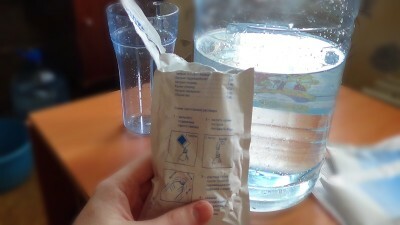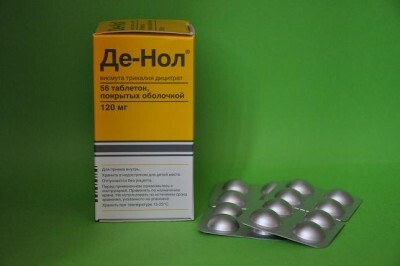1 Survey of a patient on proctology
During a general examination, a doctor can detect bloating in the abdominal area or in other areas, determine how intense the peristalsis is. In addition, the front wall of the abdominal cavity is necessarily probed. This is required to identify different types of neoplasms. The rectum is examined for fistula. In the course of palpation, the spastic contraction of the intestinal muscles in his loops is studied. In addition, this way you can find out how strained your abdominal muscles are. Perhaps, the reason will be not only the intestines, but also the stomach.

We recommend that you read
- What you can eat with ultrasound of the abdominal cavity
- What is urine diastase and how to take the analysis?
- When is the GFD of the stomach prescribed and is there a contraindication?
- Effective remedy for gastritis and stomach ulcer
If there is a tumor in the intestine, a full examination allows you to determine its size, dislocation, consistency and the ability to change position. When examined, you can identify ascites and other pathological abnormalities. Then the doctor should, during the examination, examine the area between the buttocks and the perianal region. If necessary, the genitals and perineum are examined in detail. Of great importance is the examination of the anus. It is necessary to check all listed areas for the presence of pigmentation, hyperkeratosis and infiltration. The doctor must check the presence of bulging, growths, polyps, hemorrhoids. Anal reflux is also tested. After all manipulations, the doctor performs a finger test.
2 Finger research method
How to examine the rectum, the doctor will tell. First of all, the finger method is used. This is a compulsory study. It must be done if the patient complains of abdominal pain, problems with intestinal obstruction and failure to perform the functions of the pelvic organs. Only after the finger method is prescribed sigmoidoscopy and anoscopy.
-
 IMPORTANT TO KNOW! Gastritis? Ulcer? To have a stomach ulcer not turned into cancer, drink a glass. ..Read the article & gt; & gt;
IMPORTANT TO KNOW! Gastritis? Ulcer? To have a stomach ulcer not turned into cancer, drink a glass. ..Read the article & gt; & gt;
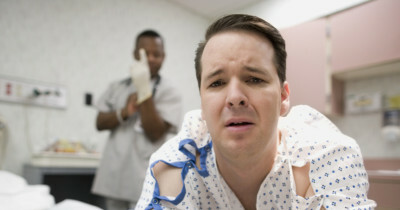
Thanks to the finger method it is possible to assess the condition of the tissues in the anal passage, to study the contractile functions of the sphincter and intestine. This technique is also used to determine how well the rectum is prepared for endoscopic examination. This method checks the mucous layer in the rectum. Some pathologies can also be identified. The method helps to evaluate the discharge from the anal passage. In addition, the finger technique determines what is best for the patient, what position to take for the subsequent examinations.
For palpation, the walls of the anal passage, their flexibility, elasticity, and mobility are checked. The mucous layer and all possible changes to which the anus can be exposed are studied. Patients think that it is better for research: a knee-elbow position or a position of reclining on the back in a special gynecological chair. In this case, the location of the patient depends on the history and course of the disease and its symptoms.
The technique of this survey is as follows. The doctor should wear special gloves made of rubber, and then gently enter the index finger into the anal passage. Next, the palpation of the walls. Of course, thus to check the small intestine does not work, but the anal passage and the adjacent area of the intestine can be studied in detail. During this procedure, the doctor can ask the patient to exert himself as at a bowel movement, and then relax the stomach. It will take a special spray, solution or ointment, which have analgesic properties. Practically there are no contraindications for carrying out this method of diagnosing intestinal diseases.
-
 Gastroenterologist. IMPORTANT: "I beg you, if you began to worry about abdominal pain, heartburn, nausea, do not in any way do gases. .."Read more & gt; & gt;
Gastroenterologist. IMPORTANT: "I beg you, if you began to worry about abdominal pain, heartburn, nausea, do not in any way do gases. .."Read more & gt; & gt;
3 Anoscopy
You can check the intestines with the help of such an instrumental method as anoscopy. It helps to examine the anus and rectum. Anoscopy is included in the list of mandatory examination methods if the patient has an organic type of rectum damage. An anoscopy must be performed before starting colonoscopy and sigmoidoscopy. For this, special equipment is used - the anoscope. It should be administered during the procedure through the anus. The equipment helps to examine the posterior opening and rectum to a depth of up to 10 cm.
The procedure should be performed in case of acute or chronic pain in the anal passage. The same applies to discharge with blood clots or mucous substances. Indications are also diarrhea and constipation. With any suspicion of rectum disease, it is necessary to produce this examination of the intestine. This procedure will help to identify inflammation, pathology and neoplasms in this organ.
TIP FROM THE MAIN GASTROENTEROLOGIST
Korotov SV: "I can recommend only one remedy for the rapid treatment of Ulcer and Gastritis, which is now recommended by the Ministry of Health. .." Read the reviews & gt; & gt;
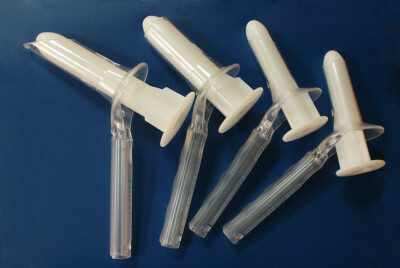
The technique for performing this procedure is as follows. As a rule, the patient is on his back. The anoscope is inserted into the anus. In this case, it is necessary to carry out circular motions. After the equipment is introduced, its doors widen. This will help expand the clearance for further inspection. Anoscopy is completely safe for humans, but the examination has contraindications. For example, the procedure is forbidden to produce in acute inflammatory processes in the perianal zone. The same applies to excessive narrowing of the anal lumen. It is forbidden to enter an anoscope for chemical and thermal burns, as well as for the development of tumors of the stenosing type.
4 Recto-Maskoscopy
Rectoscopy is a fairly popular endoscopic type examination. Helps to study the rectum and the lower zones of the sigmoid intestine. You can examine the rectum to a depth of 35 cm. This procedure does not apply to the most comfortable, so the patient will have to suffer. But it is practically painless. Anesthesia is required in rare cases. Before doing this examination, the patient needs an enema for cleansing the intestine. Rectoscopy is allowed only after a preliminary palpation.
WE RECOMMEND!
For prevention and treatment of Digestive Diseases our readers advise Monastic tea. This unique remedy consists of 9 medicinal herbs useful for digestion, which not only supplement, but also strengthen each other's actions. Monastic tea will not only eliminate all symptoms of the gastrointestinal tract and digestive system, but will also permanently eliminate the cause of its occurrence.
Opinion of doctors. .. "
Indications for this procedure are discomfort and pain in the anal passage, bleeding, mucous and purulent discharge. In case of stool problems, this examination is also assigned. If there is a suspicion of the development of any diseases of the sigmoid process of the intestine, then this procedure will also be required.

No contraindications, but it is not recommended for bleeding profuse type, inflammatory processes of acute nature in the abdominal cavity and anal fissures. It is necessary to postpone this examination until recovery. For the procedure, a rectoscope is applied, which is introduced at 5 cm, and then the device begins to pass only through the lumen of the organ.
5 Irrigoscopy
Irrigoscopy is an x-ray method of examination of the large intestine. Preliminary through the anus is introduced barium suspension. Photographs should be performed in a lateral and a direct projection. Thanks to this method, it is possible to establish the appearance of growths and neoplasms, fistulas, development of colitis of diverticulosis, the appearance of narrowing of the organ due to scar tissue. When the organ is densely filled with a special contrast material for X-ray images, it is possible to establish not only its location, shape and extent, but also the level of elasticity and extensibility of the intestinal walls. In addition, the method helps to identify pathologies. The most informative method is the preliminary double contrasting. If the patient has a complicated disease or if there is perforation on any part of the body, it is forbidden to perform such a survey.
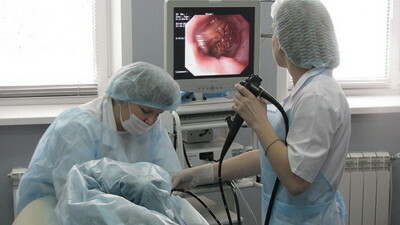
Colonoscopy helps to examine the large intestine along its entire length. For this, a colonoscope is used. During this examination, the doctor determines the condition of the mucous layers of the organ. Also, through colonoscopy, foreign bodies can be removed immediately, hemorrhage can be stopped, and benign tumors removed. This technique refers to the most informative. It must be applied to people who previously had polyps removed in this organ, there is intestinal obstruction, bleeding or other inflammatory diseases. It is forbidden to use a colonoscope for problems of blood coagulability, pulmonary or heart failure, infectious diseases with acute course. With ischemic, ulcerative diseases and severe colitis, it is also not recommended to use such equipment.
6 US
How to check the small intestine, the doctor will tell. He should warn that it will be necessary to conduct ultrasound. Ultrasound of the intestine should be done only after preliminary preparation. It will be necessary to give up some products a few days before the procedure. This method is quite informative if carried out correctly. With ultrasound of the intestine, the body is filled with a special liquid, and ultrasound scanning is then performed.
To prepare for this procedure, and the data was as reliable as possible, it is necessary to adhere to several days of a certain diet. First, a few days before, you need to start taking regular activated charcoal. Secondly, before ultrasound of the intestine, you must stop using beans, alcohol and carbonated beverages, sweets.
Coffee, tea, dairy products are prohibited. I will have to give up fatty meat and fish. In the evening before the procedure you will need to make an enema for cleansing. In the evening it is forbidden to eat. Ultrasound is required in cases with suspicions of peritonitis, cancer, Crohn's disease, colitis or appendicitis. This procedure is performed by the transabdominal and endorectal method.
People are thinking about how to check the intestines, except for the colonoscopy. Now a lot of research has been developed that will help to solve this problem. Of course, all these procedures are not pleasant, but they help to establish a diagnosis and track changes in the state of health of the intestine. Before thinking about which doctor will help you carry out such studies, you need to consult your doctor. Only the proctologist can properly perform the whole complex of activities.
- 1 Patient examination for proctology
- 2 Finger test method
- 3 Anoscopy
- 4 Recto-Masonoscopy
- 5 Irrigoscopy
- 6 US
Many people are worried about how to check the intestines. Of course, first of all there arises fear and reluctance to carry out this procedure, which is necessary in many cases, but then one simply has to reconcile with this. Now, many methods and techniques have been created to conduct a survey of the entire intestine, so that one can test the intestine without a colonoscopy. At this stage in the development of proctology, methods have been developed that help to carry out this study painlessly, and it is possible to study completely all the sections of the tubular organ. First, a primary type of consultation is required, which involves examining the patient, finger type of research and anoscopy. In some cases, even at this stage of the survey, you can establish a diagnosis. If there is a need, then additionally appointed rheumatoscopy, intestinal X-ray or colonoscopy.
Do you have gastritis?
GALINA SAVINA: "How easy is it to cure gastritis at home for 1 month. A proven method is to write down a recipe. ..!"Read more & gt; & gt;

